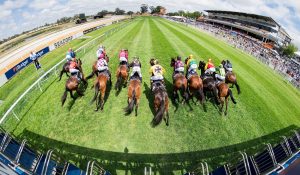
Ascot Racecourse, located in Perth, Western Australia, is one of the state’s premier racing venues. Known for its high-quality racing and strategic challenges, Ascot is a track that rewards punters with the right insights.
Track Overview
- Location: Perth, Western Australia
- Circumference: 2,100 metres
- Straight Length: 400 metres
- Direction: Left-handed (anti-clockwise)
- Surface: Turf
- Racing Style: Suits strong finishers and horses that can race on the pace
Track Characteristics
- Large, Spacious Track: The wide turns and long straight provide horses with the ability to find their rhythm. Ascot generally offers a fair racing surface.
- 400-metre Home Straight: The straight allows horses to make up ground, but it also benefits those who can maintain strong finishing speed.
- Track Conditions: The track generally handles rain well, but wet conditions can still have a significant impact, especially on horses with a preference for firmer ground.
- Fair Surface: Ascot’s turf provides a consistent surface, but track bias can develop depending on weather and rail position.
Barrier Positions
- Short Distances (1,000m to 1,200m): Inside barriers are a significant advantage due to the quick run to the first turn.
- Middle Distances (1,400m to 1,600m): Barrier positions are more flexible, though inside draws still hold some advantage.
- Staying Races (2,000m and beyond): Barriers are less critical in longer races, but horses drawn wide can face difficulties with early pace.
Track Bias
- Weather Impact: Rain can alter the dynamics of races. Wet conditions can favour horses that handle soft or heavy tracks.
- Rail Position: A true rail position usually leads to fair racing, but when the rail is out, on-pace runners can have a slight advantage.
- Strong Finishers Favoured: Ascot’s long straight often favours horses with good acceleration in the final stages of a race.
Betting Tips and Strategies
- Favour Strong Finishers: The long straight at Ascot gives horses with finishing speed a significant advantage.
- Monitor Track Conditions: Wet weather can impact race outcomes, so always check track conditions before betting.
- Consider Barrier Positions: Inside barriers are advantageous, especially in short-distance races.
- Look for Proven Performers: Horses with experience at Ascot and a solid track record are often reliable bets.
- Watch Rail Movements: When the rail is out, on-pace runners are generally favoured.
Final Thoughts
Ascot Racecourse presents a fair but challenging environment for punters. By paying close attention to track conditions, barrier positions, and the finishing capabilities of horses, you can increase your chances of success when betting at Ascot.